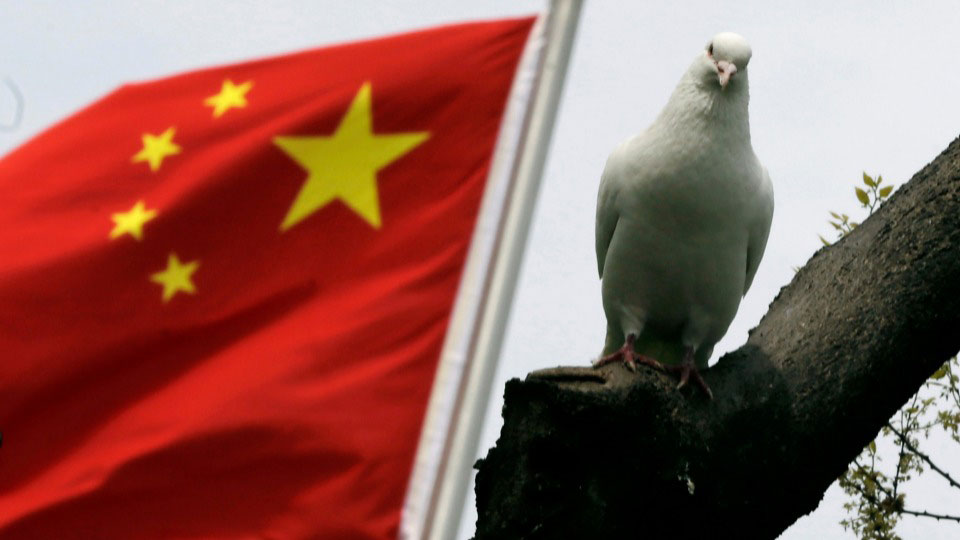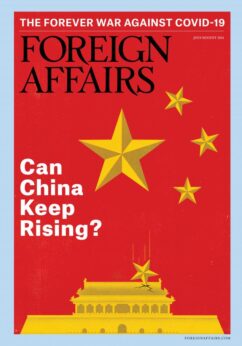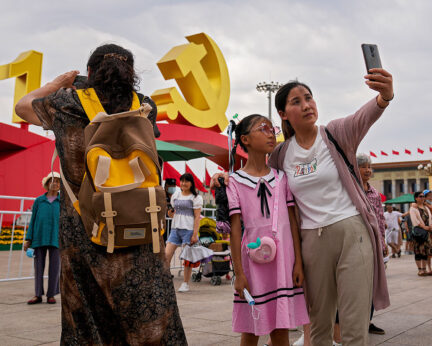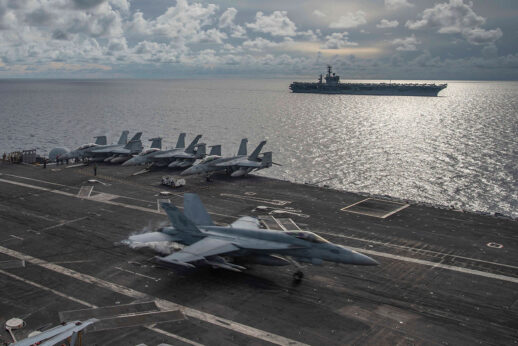
With all of the saber-rattling directed at China these days, it’s important to get a clear picture of what the U.S. foreign policy elite and their Chinese counterparts are thinking regarding that nation’s unprecedented rise on the global stage. Their perspectives on the Communist Party of China, the country’s continued economic expansion and growing military power, and its relations to the rest of the world are telling. And when understood objectively, they hint at something more than a repeat of the Cold War of the 20th century.

For example, the July/August issue of the journal Foreign Affairs is devoted entirely to the question: “Can China Keep Rising?” The magazine includes a diverse array of voices, including from China, and everyone interested in peace would do well to pay attention to the information contained within its pages.
That the “East is rising” is now “a point of near consensus…bolstered by years of dazzling economic performance,” the introductory editorial notes. Additionally, China “has claimed its place as a world power and [has] accepted that long-term competition with the United States is all but inevitable.” Though dutifully pointing out the obvious—that “past performance does not guarantee future results”—the issue carefully highlights the challenges and opportunities ahead for China and the CPC.
According to Jude Blanchette, Freeman Chair in China Studies at the Center for Strategic and International Studies, Chinese President and CPC General Secretary Xi Jinping is moving rapidly to change Chinese society because “he sees a narrow window of ten to 15 years during which Beijing can take advantage of a set of important technological and geopolitical transformations. Which will also help it overcome significant internal challenges.”
As Blanchette puts it, Xi sees “the convergence of strong demographic headwinds, a structural economic slowdown, rapid advances in digital technologies, and a perceived shift in the global balance of power away from the United States as…demanding a bold set of immediate responses.”
While Blanchette’s article lacks depth and context, it does draw a few important conclusions that point to worries quietly whispered within the gossip mill of the U.S. foreign policy elite. “By narrowing his vision to the coming ten to 15 years, Xi has instilled a sense of focus and determination in the Chinese political system that may well enable China to overcome longstanding domestic challenges and achieve a new level of global centrality.”
Most importantly, if successful, China “will position itself as an architect of an emerging era of multipolarity,” which is what Washington fears, as it has enjoyed roughly 30 years without a major competitor in the global arena.
Of course, Blanchette’s article would not be complete without the obligatory Western references to a possible Xi “cult of personality,” the lack of internal democracy, and “visible sycophancy” within the CPC. With just a hint of racist chauvinism, Blanchette concludes Xi “likely does not understand…that he himself may be the biggest obstacle” to China’s continued success.
On the other end of the political spectrum is an essay by Yan Xuetong, a CPC leader and Distinguished Professor and Dean of the Institute of International Relations at Tsinghua University. As Yan points out, China’s power is “second only to that of the United States.”

Yan notes that Chinese GDP reached 71% of U.S. GDP by the end of 2020 and is expected to “close the remaining gap in the coming decade.” While China “has become a global power that can meet the rest of the world on an equal footing,” it is not attempting to “frame relations with the West as a new Cold War; leaders in Beijing believe that Soviet-style ideological expansionism could trigger a backlash that might hinder their country’s continued [economic] growth,” though China will “try to shape an ideological environment favorable to its rise.” This is an interesting shift in emphasis, one that should be studied closer.
Illustrative of the shift in the balance of power, Yan cites an “assertive retaliatory sanctions strategy.” For example, when the Trump administration imposed sanctions on 14 high-ranking Chinese officials, China responded in kind and imposed sanctions on 28 American officials, including then Secretary of State Mike Pompeo. Similarly, China “quickly retaliated” against British and EU sanctions. The Chinese government rightly “considers any sanctions or criticism of its policies as interference in its internal affairs.” Actions like these would have been unthinkable during the “end of history” celebratory atmosphere that dominated Western foreign policy thinking in the wake of Soviet socialism’s defeat in the 1990s.
On the military front, China’s strategy is two-fold, Yan adds. First, to turn the People’s Liberation Army into “a world-class fighting force ready for war at any moment,” though its core mission “will remain one of deterrence, not expansion.”
Second, China aims to build “bilateral strategic partnerships.” Within weeks of the Alaska summit where Chinese diplomats berated their U.S. counterparts (saying in part, U.S. officials do “not have the qualifications…to speak to China from a position of strength”), Beijing “embarked on an extensive diplomatic campaign, dispatching its defense minister to the Balkans and its foreign minister to the Middle East, where the latter officially signed a 25-year strategic cooperation agreement with Iran and pledged $400 billion in Chinese investments.” China also received foreign ministers from Indonesia, Malaysia, the Philippines, Singapore, and South Korea. And the China-Russia relationship will remain an important geopolitical reality, to Washington’s chagrin.

In short, we are entering a post-pandemic, multi-polar world, and policymakers will increasingly have to “come to terms with this new reality,” Yan concluded.
Wang Jisi, President of the Institute of International and Strategic Studies at Peking University, noted that China is now more economically robust than the former Soviet Union was during the Cold War and that China has replaced the U.S. as the largest destination for foreign investment. “Americans increasingly feel that in a contest with China, the momentum is with Beijing,” he added. This is also an important acknowledgment that hints at something more than a repeat of the Cold War of the 20th century.
To Wang, U.S.-Chinese relations revolve around “two orders: the internal order that the CPC maintains in China and the international order that the United States wants to lead and sustain.” Until recently, Washington and Beijing “maintained an implicit understanding.” The U.S. “would not openly attempt to destabilize China’s internal order, and in turn, China would not intentionally weaken the U.S.-led international order.” It was within this framework that both economies expanded—“to the point of interdependence.” They also cooperated on counterterrorism and climate change.
However, this understanding “has now unraveled,” as the U.S. “seems determined to weaken” the CPC and China increasingly flex international muscles, refusing to be constrained as a junior world economic and political partner. The Chinese have called for “mutual respect.” According to Wang, “Washington should respect Beijing’s internal order, which has lifted hundreds of millions of people out of poverty and brought stability to the world’s largest country.”
These are important observations from a multiplicity of sources that go beyond the saber-rattling and bombastic calls for a new Cold War. If one thing is clear—from informed sources, domestic and from within China—it is this: China is rising. We can embrace it with mutual respect and friendship, or we can continue down a path of increased hostility. But, if informed reports are accurate, the result may be an overall weakening of Western capitalism, not the triumphalism of the post-Soviet 1990s.
As with all op-eds published by People’s World, this article reflects the opinions of its author.

MOST POPULAR TODAY


Communist Karol Cariola elected president of Chile’s legislature

Zionist organizations leading campaign to stop ceasefire resolutions in D.C. area

Afghanistan’s socialist years: The promising future killed off by U.S. imperialism

High Court essentially bans demonstrations, freedom of assembly in Deep South



Comments